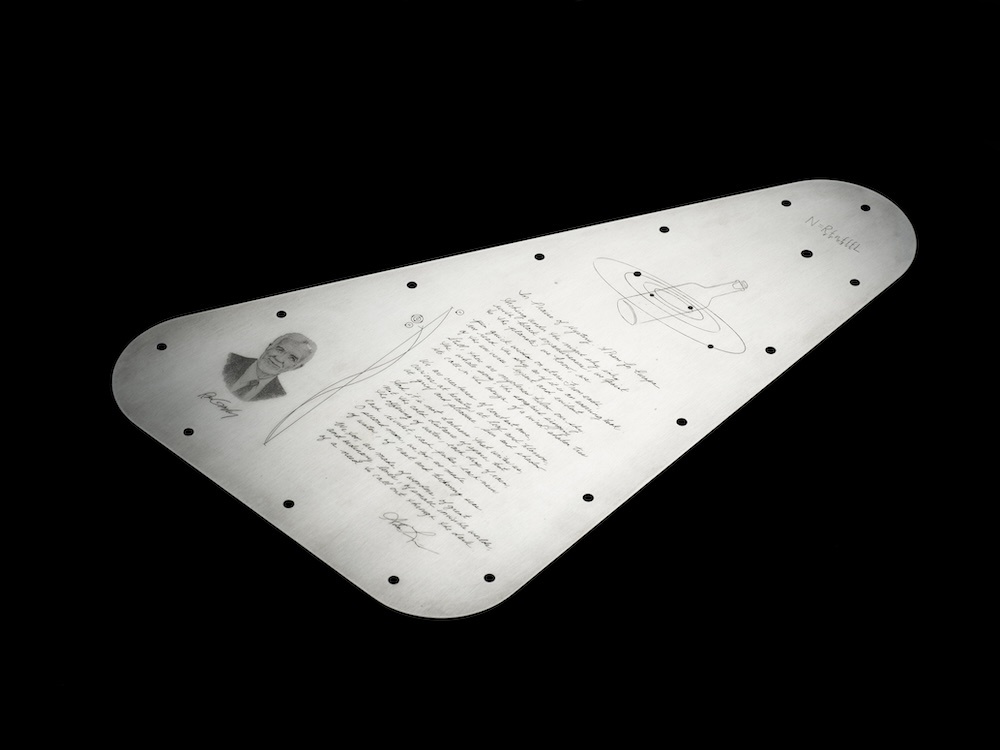The Voyager spacecraft carried on board a plethora of scientific instruments but attached to the side was a golden record. The sounds of Earth were recorded upon it. Now, another mission is going to be carrying a message out into space. The Europa Clipper mission will launch in October and it will carry a plaque with images, illustrations and messages. There will be more than 2.6 million names and the word for ‘water’ converted into waveform from 103 languages.
I think Captain James T Kirk would be proud of NASA for boldly going. This time with another message to the Cosmos on board the Europa Clipper. The destination is Jupiter’s moon Europa which has an icy crust and it is thought, a subsurface ocean. If the ocean exists, and all evidence seems to point to its presence, then there is likely twice as much water by volume than here on Earth. The plaque has been attached to commemorate the connection between the two worlds.
The triangular shaped tantalum metal plaque measures about 18x28cm and has an engraving of a handwritten poem by Ada Limon “In Praise of Mystery: A Poem for Europa”. The 2.6 million names are engraved upon a silicon microchip that is in the centre of an illustration of a bottle among the Jovian system, NASA’s message in a bottle.
In a statement, Lori Glaze, director of Planetary Science Division at NASA said “The plate combines the best humanity has to offer across the Universe – science, technology, education, art and math.” He went on to say “The message of connection through water, essential for all forms of life as we know it, perfectly illustrates Earth’s tie to this mysterious ocean world we are setting out to explore.”
One perhaps more controversial inclusion is the famous Drake Equation. Scientists have been divided about the validity and benefit of this equation which was developed by Frank Drake in 1961. Drake’s equation attempts to answer the question, using mathematics, of how many advanced civilisations there may be in our Galaxy. Aside from its varied levels of support, the equation has been etched onto the plate as well, on the inward facing side.
The probe is scheduled to launch later this year and, after a 2.6 billion km journey, will arrive at Europa in 2030. It will then begin making a total of 49 flyby’s of Europa to try and establish if the conditions could support life. To that end, it will have a host of instruments to explore the subsurface ocean, the crust, the atmosphere and the space environment around the moon. To ensure the instruments don’t fail in the high levels of radiation from Jupiter, they are housed in a metal container with one of the openings sealed by the plaque.

The illustrations don’t just advertise what we are like, they also depict how we communicate. References are made to radio frequencies that we could use for interstellar communication just in case an alien civilisation intercepts the probe some time in the future. It reveals how we use radio bands to listen out for alien signals and includes the frequencies emitted by water.
If all of that wasn’t enough, in a lovely touch and a nod to one of the founders of planetary science and advocate for the mission, there is a portrait of Ron Greeley too. It was he who laid the very building blocks for the mission and it is a fitting gesture that he should be travelling to Jupiter with the craft he dreamed of.
Source : NASA Unveils Design for Message Heading to Jupiter’s Moon Europa

